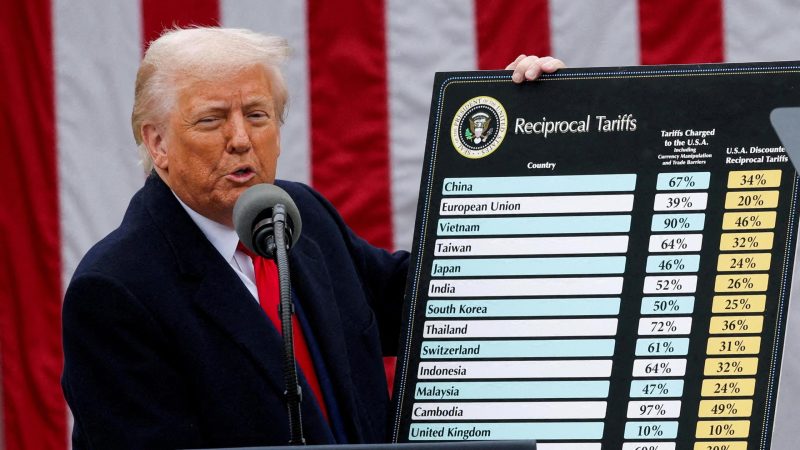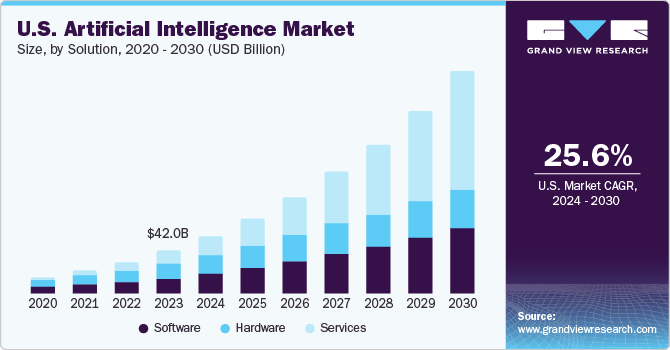
Stocks in AI companies were among the biggest losers after President Trump announced sweeping tariffs on foreign trading partners last week, in a sign that those tariffs could be bad news for the industry.
The companies at the forefront of the AI industry are currently spending hundreds of billions of dollars on building new datacenters to train AI models. Tariffs will increase the already gargantuan costs of those efforts, analysts say.
“The tariffs will make building AI datacenters much more expensive, both because AI servers are largely imported and will face tariffs, at least until supply chains can be rejigged, and because much of the other equipment in datacenters, like the cooling and power infrastructure, is imported as well,” says Chris Miller, author of Chip War.
Chips themselves, the key computing hardware inside AI datacenters, are exempt from Trump’s tariffs—but only if they are imported to the U.S. as standalone products. However, most chips are not imported into the U.S. as raw materials; instead, they arrive already-packaged inside products like servers, which are subject to tariffs.
Worried AI investors received good news on Monday in a note circulated by analyst Stacy Rasgon, who pointed out that most Nvidia servers are likely to escape the bite of Trump’s tariffs. That’s because most appear to be assembled in Mexico, and therefore benefit from a tariff exemption under a free trade agreement. That’s a “silver lining” to the news, says Rasgon, a semiconductor industry analyst at Bernstein Research. (Nvidia declined to comment.)
“I think there are some workarounds to avoid massive tariffs on AI infrastructure in the U.S., which is good because otherwise what’s the whole point of this?” says Rasgon. “We’d be making the U.S. the most expensive place in the world to build out AI infrastructure—that doesn’t sound like a great thing.”
But construction materials, computer parts, cooling infrastructure, and power supplies are just some of the costs that are likely to increase as a result of the tariffs. The costs could be so great that companies might consider building datacenters abroad instead of in the U.S., says Lucas Hansen of the Civic AI Security Program, a nonprofit. Datacenters already tend to congregate where power is cheap, he says. “It’s possible that tariffs are one more additional incentive for building those datacenters abroad.”

The increased costs of datacenter construction create a “real risk,” Miller says, that the U.S. might begin losing ground to China in the AI race—victory in which is a key foreign policy goal of the Trump Administration. “It has already been a major challenge to build all the datacenter capacity we need” in the U.S. to stay ahead of China, Miller says. “Now datacenter construction will get meaningfully more expensive.”
“The short term impact will be significant, and the long term impact is unclear—and companies can’t plan for the long term because tariff rates will likely keep changing,” Miller adds.
Even if Trump creates more carveouts to ease the pain on the datacenter industry, the changes to the macroeconomic climate wrought by Trump’s trade war might create new headwinds for AI companies. “My bigger worry is more macro now: we go into recession, ad spending falls off, and the hyperscalers in general have less money,” says Rasgon, referring to the tech companies spending heavily on AI. Collapse in demand for AI and datacenters, plus supply chain chaos, might follow, he adds. “This doesn’t feel like a strategy,” Rasgon says of the tariffs. “This is just a grenade.”
The increases in datacenter costs will probably make it more expensive for companies to train AI systems in future. But this is unlikely to mean that using AI gets more expensive for consumers. The cost of using an AI of a given level of intelligence is falling at a rate of around 40x per year, according to recent research by Epoch AI, as a result of algorithmic efficiencies, hardware improvements, and pricing competition. In other words, a year from now, using a given model will probably require significantly less computing power (and therefore money) than it does today.
So even if Trump’s tariffs do add to the cost of datacenter components, researchers say AI usage is likely to continue to get cheaper over time.



